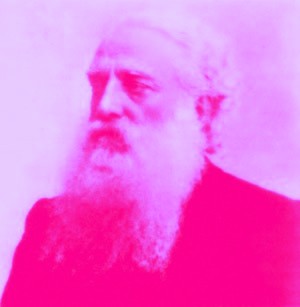Blavatsky Blogger

Taking Theosophical
ideas
into the 21st
century

The
Buddhist Flag
Designed
by Colonel H S Olcott in 1880
and still in use worldwide as a
universal symbol of Buddhism today.
Posted
11/3/07

The
Universal Buddhist flag

The
Universal Buddhist flag was designed by Henry Steele Olcott in 1880 and adopted
as a worldwide symbol of Buddhism, transcending sectarian divisions.
Colonel
Olcott’s Contribution to Buddhism
Colonel
Olcott embraced Buddhism in 1880 and began a concerted effort to a pubic
commitment to live by Buddhist precepts. He united the Buddhist sects of
H P
Blavatsky says of the Buddhist Flag in “Our Three Objects”
“One evidence of the practical good sense shown in our
management is the creation of the "Buddhist Flag" as a conventional
symbol of the religion apart from all sectarian questions. Until now the
Buddhists have had no such symbol as the
cross affords to the Christians, and consequently
have lacked that essential sign of their common relation to each other, which
is the crystallizing point, so to say, of the fraternal force our Society is
trying to evoke.
The
Buddhist flag effectually supplies this want. It is made in the usual
proportions of national Ensigns, as to length and width, and composed of six
vertical bars of colours in the following order: Sapphire blue, golden yellow,
crimson, white,
scarlet and a bar combining all the other colours.
This is no
arbitrary selection of hues, but the application to this present purpose of the
tints
described in the old Pali and Sanskrit works as visible
in the psychosphere or aura, around Buddha's person and conventionally depicted
as chromatic vibrations around his images in
suggestive in their combination. The new flag was first
hoisted on our Colombo Headquarters, then adopted with acclaim throughout
Ceylon; and being introduced by Colonel Olcott into Japan, spread throughout
that Empire even within the
brief term of his recent visit.”
The Flag

The Buddhist flag is a flag designed to symbolize Buddhism. It
was in designed by Colonel Olcott 1880 and is the official flag of the World
Buddhism Council.
The five colors of the flag represent the colors of the aura
that emanated from the body of the Buddha when he attained Enlightenment:
Blue: Loving kindness, peace and universal compassion
Yellow: The Middle Path - avoiding extremes, emptiness
Red: The blessings of practice - achievement, wisdom, virtue, fortune and
dignity
White: The purity of Dharma - leading to liberation, outside of time or space
Orange: The Buddha's teachings – wisdom
______________________
The Blavatsky
Blogger
Taking Theosophical
ideas
into the 21st
century
__________________________
Postings
to this Website reflect
the views of The Blavatsky Blogger.
Please
don’t go looking for anyone else.

